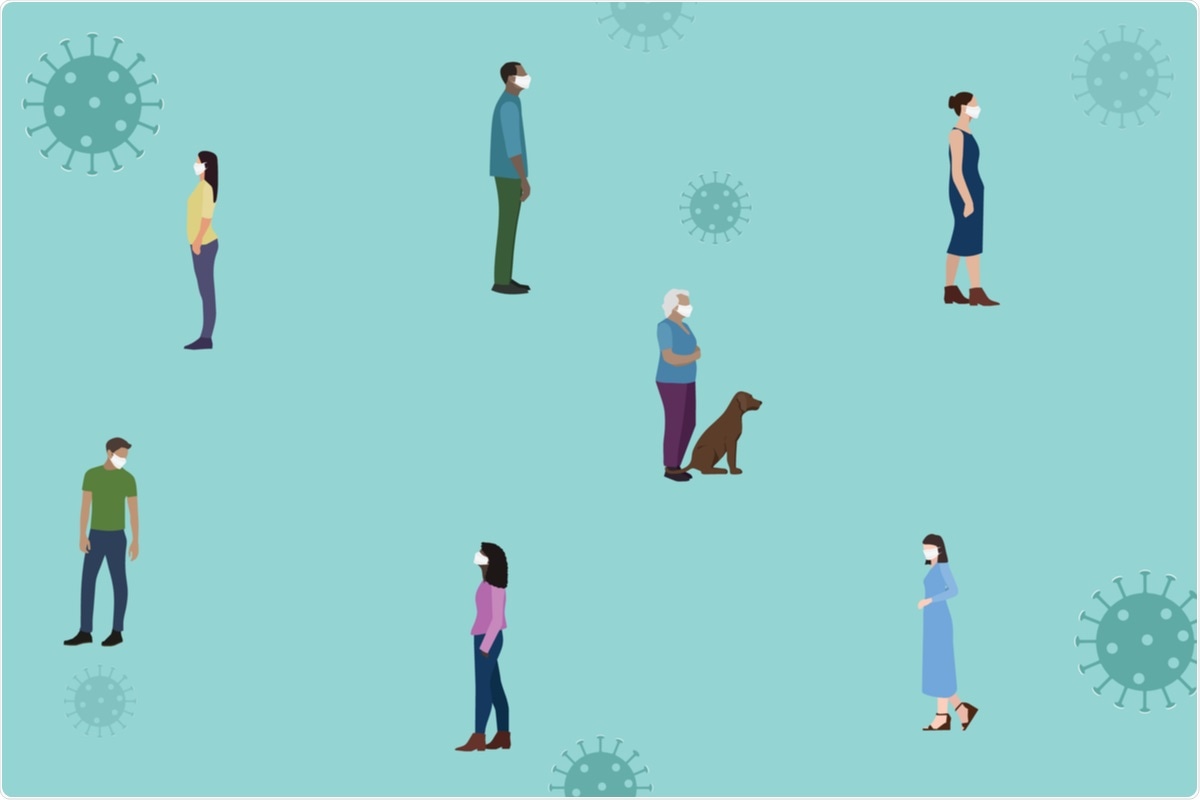The rapid outbreak of the severe acute respiratory syndrome coronavirus 2 (SARS-CoV-2) across the world has led to a pandemic which is popularly known as coronavirus disease 2019 (or COVID-19). SARS-CoV-2 is a highly infectious RNA virus that has a very high rate of transmission and causes mild to severe infection.
To date, this virus has claimed more than 4.2 million lives worldwide. The main aim of the World Health Organization’s (WHO) Global Strategic Preparedness and Response Plan for COVID-19 disease is to prevent further transmission of the virus and, thereby, aim to reduce the mortality rate owing to this disease.
Background
Previous systematic reviews had mainly shown the methodological shortcomings of the available studies associated with SARS-CoV-2 infection dynamics. These studies failed to draw any firm conclusions about the COVID-19 transmission dynamics. Further, a very limited number of studies are available that explain the transmission dynamics of the SARS-CoV-2 virus (i.e., the transmission of the infection from one infected person to another healthy individual). Hence, there is a gap in research regarding the understanding of transmission dynamics of COVID-19 disease in the individuals who develop symptoms post-testing (presymptomatic) or are asymptomatic.
Scientists have stated that to develop standardized methods to determine the transmission dynamics of SARS-CoV-2, an amalgamation of clinical, epidemiologic, molecular, and laboratory evidence should be brought together into the framework. The studies associated with this framework must contain high-quality confirmatory evidence, such as viral culture, genome sequencing, etc., which would indicate the infectivity of the virus.

A new study
Researchers at Oxford University, UK, have conducted a systematic review of the available studies to address a) whether asymptomatic or presymptomatic individuals can transmit the disease; b) the duration of the infectiousness of these individuals (asymptomatic or presymptomatic); c) the relationship between infectiousness and PCR cycle threshold; and d) whether a chain of transmission can arise from asymptomatic and/or presymptomatic individuals with SARS-CoV-2 infections. The team’s paper detailing their review’s findings has been made available on the medRxiv* preprint server, while it undergoes peer review.
The study surveyed relevant articles from LitCovid, medRxiv, Google Scholar, and the WHO Covid-19 databases. The researchers of this study have included all studies from March 31, 2021, and also included the lists of references therein. They included studies related to people who were exposed to SARS-CoV-2 infected communities or individuals, within 2-14 days of their infection.
The researchers identified 18 studies from a variety of settings that fitted their criteria. As stated above, a limited number of systematic reviews are available that have highlighted the lack of standardized methodology and proper reporting criteria and noted various shortcomings regarding the methodology associated with transmission studies. An interesting factor of this study is that the authors received 100% responses to reviewers’ queries. The authors of the 18 studies included in this study had cooperated immensely by satisfying all the queries with valid data to help standardize the methods associated with viral transmission studies.
Typically, research on transmission dynamics is technically challenging to conduct, especially with an ongoing pandemic. Another difficulty of conducting research on disease transmission lies in identifying asymptomatic patients at the time of the surveys. The current study revealed a high rate of presymptomatic cases that ranges between 50% and 100% in nursing homes or care home facilities.
Among the 18 studies, the researchers classified 15 studies in the category of high risk of COVID-19, and the remaining 3 were categorized as moderate risk studies. The team reported that among the high-risk studies, it is extremely difficult to differentiate between presymptomatic and asymptomatic cases. Owing to scarce data, determining the duration of infectiousness of the infected individuals with asymptomatic (6 studies) or presymptomatic (4 studies) could not be confirmed. Only three studies were found that provided possible evidence on asymptomatic transmission of COVID-19.
Similarly, the researchers found five highly cited studies that provided evidence on presymptomatic transmission of SARS-CoV-2. Previous studies have reported the challenges faced to evaluate the COVID-19 symptom profile of older adults, showing a need for more thorough studies associated with clinical observations that could provide an accurate classification of clinical symptoms.
Conclusion
The researchers stated that single or point binary PCR testing does not provide much information regarding the transmission rate of the disease. A follow-up study with repeated PCR tests in precise intervals could help understand the transmission of the disease. Typically, the Ct (cycle threshold) values represent the probability of the number of times the virus can undergo replication.
The team found insufficient data on the connection between virus transmission and the age of patients. They found that a variable percentage of asymptomatic candidates might develop symptoms later.
The team stated that more research must be conducted to gain a better understanding of the roles of asymptomatic and presymptomatic individuals in the transmission dynamics of SARS-CoV-2. Additionally, the researchers have recommended more longitudinal follow-up studies for at least three weeks with detailed epidemiological reports.
*Important notice
medRxiv publishes preliminary scientific reports that are not peer-reviewed and, therefore, should not be regarded as conclusive, guide clinical practice/health-related behavior, or treated as established information.
- Jefferson, T. et al. (2021). Transmission of SARS-CoV-2 from pre and asymptomatic infected.medRxiv 2021.07.28.21261254; doi: https://doi.org/10.1101/2021.07.28.21261254, https://www.medrxiv.org/content/10.1101/2021.07.28.21261254v1.
Posted in: Medical Science News | Medical Research News | Disease/Infection News
Tags: Coronavirus, Coronavirus Disease COVID-19, CT, Epidemiology, Genome, Laboratory, Mortality, Nursing, Pandemic, Research, Respiratory, RNA, SARS, SARS-CoV-2, Severe Acute Respiratory, Severe Acute Respiratory Syndrome, Syndrome, Virus

Written by
Dr. Priyom Bose
Priyom holds a Ph.D. in Plant Biology and Biotechnology from the University of Madras, India. She is an active researcher and an experienced science writer. Priyom has also co-authored several original research articles that have been published in reputed peer-reviewed journals. She is also an avid reader and an amateur photographer.
Source: Read Full Article





